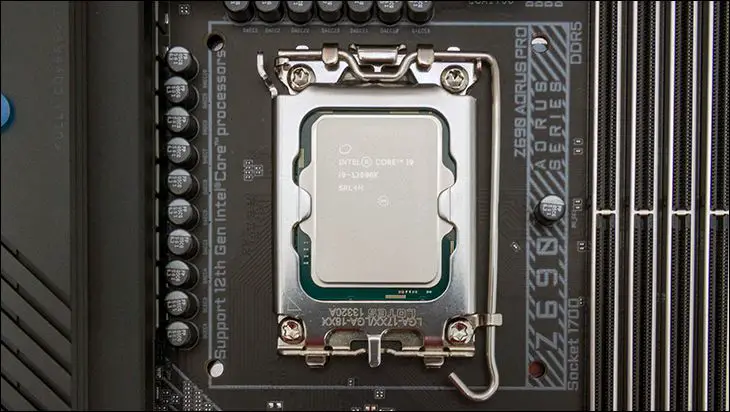We must admit that when we heard about the 12th generation Intel Core-I’s were just around the corner we were rather… puzzled as it has been less than a year since 11th gen landed… but mainly excited. Then we remembered how Alder Lake would be a combination of Intel Atom (“Gracemont”) cores with next gen Golden Cove cores… and a certain notorious King’s song went through our heads. Yes. Our initial impression was that Intel investors were going to be unhappy with Intel’s RnD division switchin’ to glide. Coasting along for another generation and letting AMD continue its rampage across the marketplace… as Alder Lake sounded more like a recipe meant for laptops not desktops.
This first impression was then reinforced when we were informed that the asking price of the Core i9 has once again been increased. Simply stated, the $589 (USD) ‘16’ core Core i9-12900K’s MSRP is $40 more than the 11900K’s launch day price of $549. That places it a full hundred dollars above what the fantastic, and still excellent, Core i9-10900K demanded on its launch day.

Thankfully. We were wrong… mostly. The fact of the matter is, not only is the 12th Generation a breath of fresh air but, both the high-end Core i9 12900K andthe ‘low end’ Core i5-12600K are actually fun to use. They are fun to use and rather powerful. Be it in single core or multi-core scenarios you do get a lot of horsepower. As a start, the new Core i9 now offers 24 simultaneous threads of processing goodness instead of 16; comes with a Turbo Boost 3.0 specification of 5.2Ghz; and has a Thermal Velocity Boost of 5.3Ghz (both the same as the 11900K it replaces). Even the $264 Core i5 12600K now offers 16 threads instead of 12 – with a 4.9Ghz max Turbo Boost setting.
That is indeed a lot of processing power when you add in the moderate, but noticeable, IPC increase that goes along with the “Alder Lake” core(s) design. Alder Lake is however quirky. They represent Intel’s vision for the future of mainstream CPUs. Whether or not that vision fully becomes reality remains to be seen but a few things are for certain. Intel is back in the innovation ‘game’ and they have packed a lot of innovation into one single generation.
For instance, on the mundane end of things, we have PCIe 5.0 and DDR5 now being a reality for mainstream consumers. In the middle of the road, and not really a surprise, you have the fact that Intel is now using their 10nm fab process for more than just a trickle of CPU SKUs (11th Gen ‘Tiger Lake’ BGA’s were 10nm fabbed). On the ‘fortune favors the bold’ end of the spectrum you have the fact that while Intel still has not fully gotten their power consumption and heat production under control… typical everyday users will consider it a massive improvement. A massive improvement thanks to the inclusion of between 4 (Core-i5) and 8 (Core-i7) Efficiency-Cores (“E-Core” for short). These e-cores offer massive energy savings in everyday scenarios. Massive energy savings while at the same time being more than capable of handling background tasks. This handoff of low-level tasks via a built in ‘Intel Thread Director’ controller in turns frees up actual high-performance cores (“P-Core” for short) to either idle in a ultra-low power state, or get on with handling important threads and their time sensitive demands.
So with all that in mind, let’s take a trip to the future of desktop computing to see exactly what has changed… and what changes are for the better and which are for the worse.












